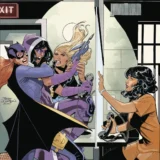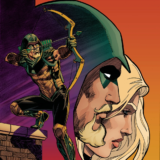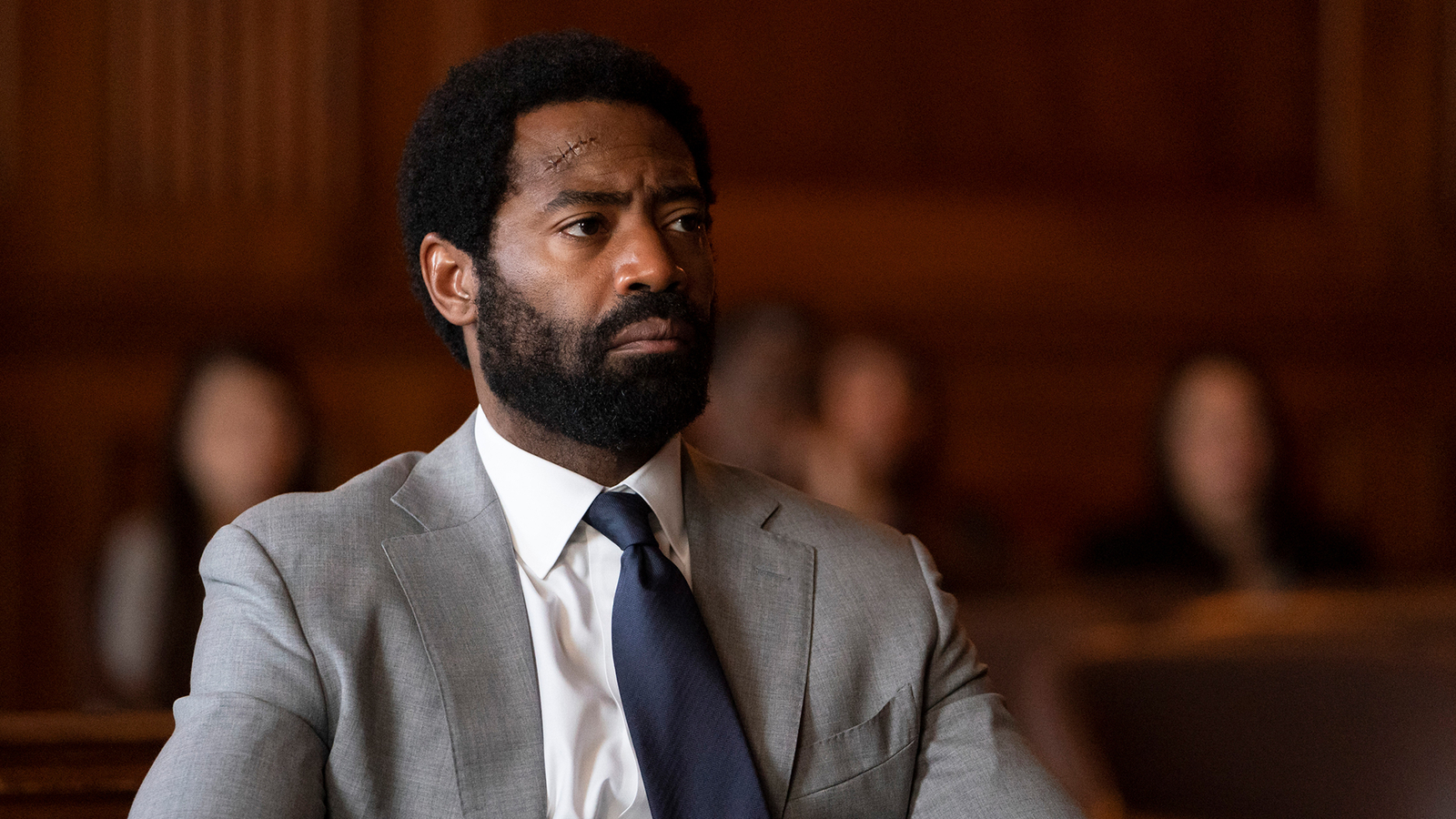The Perils and Pleasures of Moviola, by Michael H. Price

I’ve been sorting through the newspaper-cartoon backlog lately, beefing up the digital-image archive while determining whether anything from a busy stretch at the drawing board during the 1990s might bear resurrecting for fresh publication. Much of this material involves a Hollywood-lampoon strip called Moviola, which originated as a weekly feature for the Star-Telegram of Fort Worth, Texas, during its last years as a higher-minded publication.
The first movie parody I ever encountered – and thus, a building-block of my long-stretch involvement in cartooning and film scholarship – came from my Uncle Grady L. Wilson, a theatre-chain manager. Grady could concoct the damnedest jolly nonsense from the flimsiest of material, and keep a straight face in the bargain. He announced to me one day in 1954 that he had booked a picture called "The Preacher from the Black Lagoon."
Now, I was six years old at the time and as impressionable as Silly Putty, and so I found it necessary to witness the arrival of Jack Arnold’s Creature from the Black Lagoon on the big screen before it dawned on me that my uncle had been just woofing.

Once enlightened to this line of cornball jive, I found my Uncle Grady’s Vaudevillian sense of wordplay as addictive as the films from which he earned his living. We developed a routine of it. We rechristened the 1958 jungle epic Tarzan’s Fight for Life, for example, as "Tarzan Fights His Wife. "Things as a class tend to seem funnier when you are a kid, or when you are an adult who declines to grow up entirely.
 And my uncle hipped me to Mad Magazine, which would spoof not only the movies’ titles – but also their substance or lack thereof. And Grady led me back via the Time Machine of repertory cinema to the heyday of the two-reeler slapstick comedy, an age when respectable feature-films routinely had provoked the creation of such short-subject laff riots as “Arabs with Dirty Fezzes” (after 1938’s self-serious Angels with Dirty Faces), “Andy Clyde Gets Spring Chicken” (after 1939’s Andy Hardy Gets Spring Fever), “Strange Innertube” (after 1932’s Strange Interlude, with or without apologies to Eugene O’Neill), and the Three Stooges’ “Violent Is the Word for Curly” (a variant upon the 1936 weeper Valiant Is the Word for Carrie).
And my uncle hipped me to Mad Magazine, which would spoof not only the movies’ titles – but also their substance or lack thereof. And Grady led me back via the Time Machine of repertory cinema to the heyday of the two-reeler slapstick comedy, an age when respectable feature-films routinely had provoked the creation of such short-subject laff riots as “Arabs with Dirty Fezzes” (after 1938’s self-serious Angels with Dirty Faces), “Andy Clyde Gets Spring Chicken” (after 1939’s Andy Hardy Gets Spring Fever), “Strange Innertube” (after 1932’s Strange Interlude, with or without apologies to Eugene O’Neill), and the Three Stooges’ “Violent Is the Word for Curly” (a variant upon the 1936 weeper Valiant Is the Word for Carrie).
Later on, Harvey Kurtzman, the founding editor of Mad and other publications too humorous to mention, became a friend as a result of our involvement in the comics-convention scene. And don’t go thinking he didn’t encourage this title-spoofing business. “Once you’ve got a grasp of parody,” Harvey averred, “satire can’t be too far out of reach. Or can it?”
Some movies’ titles, as my uncle had pointed out, were unintentionally hilarious – to wit, such he-man sagebrushers of the 1920s and ’30s as Riders of the Cactus (ouch!) and Three Texas Steers (how’s that again? an emasculate conception?) and The Fighting Boob (mmm-hmm). Discoveries of this nature were free shots in the game, fully as valuable as any original lampoon.
Even John Carradine took a hand in it: When I met the great actor in 1962 – the encounter is discussed in some detail in the second volume of the Forgotten Horrors books – Mr. Carradine told me with a straight face that he was preparing for what could only be his greatest enactment this side of The Grapes of Wrath or at least Voodoo Man. The role would be that of a ghost harboring a grudge against the entirety of humankind. And its title? "The Gripes of Wraith."
All of which goes a long way toward explaining why Moviola (1992-1996) plays out like such a hokey throwback despite its concentration upon films of its immediate day: Good ham never goes stale – it just leaves you groaning.

During the formative stages of Moviola, my wife and I attended a USA Film Festival reception for a visiting dignitary from the International Consortium of Film Snobs. A fine way to kill a Saturday night, especially if one is attuned to fatuous discourses on the deeper meanings of Bergman (Ingmar or Ingrid) and Truffaut.
Christina and I were there for the usual professional-slash-political reasons – and also in order that I might absorb a bit of wisdom from the guest of honor, a gent whom I’d long regarded as a fine role model for a career in film scholarship and criticism.
At least the buffet met the expectations. The Great Man His Ownself proved arrogant and stuffy. And although he bothered to acknowledge my one (at the time) published book of moviemaking history as “something I wish I had written myself,” still I got the impression that his comment had more to do with territorial resentment.
The Big Moment of the evening took place when one couple announced they must be leaving: “We must rise early, for church.”
“Church – feh!” replied our visitor so that all in attendance might hear. “The cinema is my only religion!”

So sour an encounter is of course better forgotten – unless one can find a practical use for it. That Important Personage left with me an impression (apart from the value of his writings and his lectures) that I found best dealt with by working it into a cartoon character.
Whereupon that character manifested his own snooty self, spontaneously enough, as a player in Moviola. The cartoon version took the character down a few pegs by making him not a respected film scholar, but rather the proprietor of a video-rental shop where (presumably) the guy could look straight down his needle-nose at any customer whose tastes failed to approximate his own.
But not to confront the character with just any old procession of shirtsleeves movie-buff patrons, Moviola gave him an annoying client whose cracked perceptions and undiscriminating appetite for entertainment would test the tolerance of even the least militant Film Snob.
Had Moviola lasted – more about that presently – its central characters no doubt would have developed a narrative continuity and a sense of camaraderie beyond the glib one-liners that characterize their appearances in the strip as it exists. Kindred souls are always more interesting when oddly matched, and as Moviola starts winding down to the final curtain during the 1996 episodes one can see a vague semblance of a character arc starting to build.
But I digress. The specific prehistory of Moviola dates from 1990 and my introduction of a Saturdays-only gag comic called What Next?! to the comics page of Fort Worth’s Star-Telegram. A new hire that year, a recent journalism-school graduate named Todd Camp, came along at the right time to pitch in on What Next?!, contributing much of the inkwork over my penciled breakdowns. During this same period, Camp worked as co-illustrator on my studio’s Carnival of Souls graphic novel (Malibu Graphics, 1991, and Midnight Marquee Press, 2005), and helped to compile a horror-comics anthology called Holiday for Screams (Malibu; 1992), among other projects.
Moviola came about in 1992 after a larger space had opened up on the Saturday funnies page. Moviola thrived long enough to develop its two leading characters in addition to the recurring element of Hollywood lampoonery – and long enough, too, to attract the attention of a New Generation of editors who fancied themselves more sharply attuned to the readership than the cartoonists responsible.
Where I was writing the feature in the assumption of an intelligent and hip-to-cinema readership, the New Prevailing Thought in journalism held that a typical reader must be a middle-school dropout, interested enough in the movies as a herd-mentality force but more keenly attuned to celebrity-gawking interests and that shallower strain of humor that can be grasped and let go in a three-second browse. A memo from one of these new-breed editors reads as follows: “Like cartoon. But too many words. Can we dumb it down?” Yes, and as Tonto said to the Lone Ranger: “Whaddaya mean, ‘We,’ white man?”
Todd Camp remained a participant in Moviola, although by now he also had become a tenured mainstay of the Telegram’s weekly kid-stuff magazine. There, he supervised design, composed a great deal of the editorial content, conducted mentoring programs, and produced his own comics-panel series.
In a sideline endeavor, Camp also began dealing in independent gay-issues journalism, via a solo-effort comic strip called Life Underground, for The Texas Triangle at Austin. This dichotomy was something of a thumb-of-the-nose to the First & Best Effort Doctrine by which a newspaper staffer determines how extensively to work as a freelance. As such, Life Undergound proved a tricky and stressful, though productive and courageous (no pseudonym), balancing act for nearly four years.
Then things turned downright weird: A campaign by the holier-than-thee-or-thou American Family Association targeted Camp as a fabricated Menace to Society and began assailing the Fort Worth Star-Telegram with calls for his removal. The timing was awkward for all concerned – and downright disastrous for the paper’s school-kids supplement, which relied not only upon Camp’s versatility but also upon his gift for working productively with children.
Whereupon the big newspaper’s management cratered in the face of threats – economic, mostly, but also just-plain menacing – from the American Family Association. The incident drew an uneasy parallel with the sorry treatment that the Dallas Times Herald had administered to the humorist John Bloom, a.k.a. Joe Bob Briggs, in 1983 after a Briggs column had been accused (falsely so) of conveying a bigoted attitude.
Camp’s lot at the Telegram became that of expulsion from the children’s magazine and reassignment to a generic features-reporting post. An outright firing, though hardly deserved, might at least have triggered a more constructive outpouring of massed indignation.
A few of us newsroom-types protested the cowardly ouster, incurring in the process the passive-aggressive wrath of those managerial geniuses who already had begun an irreversible dumbing-down of the Telegram, seeking trendiness at the sacrifice of sense and substance. (“Mass Man must be served by Mass Means,” as a cousin of mine, the pedigreed satirist Roger Price, had summarized an ill-heeded warning from the social critic José Ortéga y Gasset.)
In the process, I started finding various of my movie-review columns censored and/or altered to reflect a pandering religious-fundamentalist bias, slightly rightward of Mussolini and/or Falwell. There also came orders, which I defied, to condemn in writing such marquee-value talents as Laura Dern and Renée Zellweger for their involvement in such “evil” movies as (respectively) Alexander Payne’s abortion-issues satire Citizen Ruth (1996) and Kim Henkel’s Texas Chainsaw Massacre: The Next Generation (1996). The newsroom environment was fast becoming toxic, except perhaps to methane-breathers.
Todd Camp, meanwhile, patently had grounds for recourse in court. Which he chose not to pursue, preferring to remain on staff under diminished circumstances.
Moviola sprung its last sprocket in 1996. I busied myself from there with the founding of the Fort Worth Film Festival, Inc., left the newspaper racket entirely for a few disgusted years in search of breathable air, and kept up the film-review involvement through the Forgotten Horrors books and so forth.
At last dispatch, Camp was still holding forth obediently at the Telegram, having developed an affinity for that pernicious province of mock-journalism known as Celebrity Gossip – a permanent loss to the cartooning trade.
And had I mentioned there’s No Accounting for Taste? Fortunate for that lot.
Prowler and Fishhead co-author Michael H. Price’s Forgotten Horrors series of movie-history books is available from Midnight Marquee Press. Price’s new-movie commentaries can be found at www.fortworthbusinesspress.com.
Moviola artwork Copyright © 2007 M.H. Price & Cremo Studios, L.L.C., P.D.Q., A.S.A.F.P.











